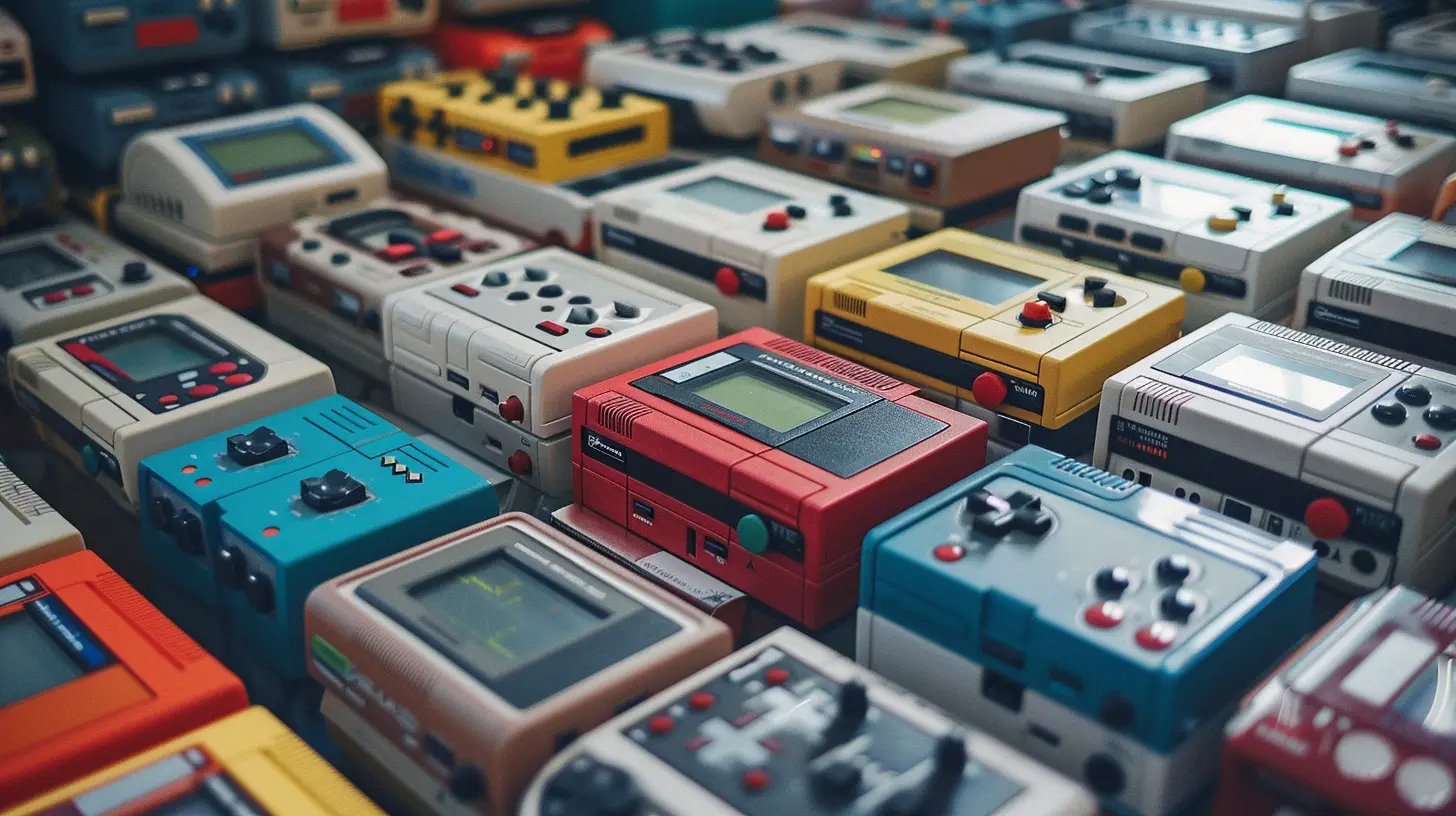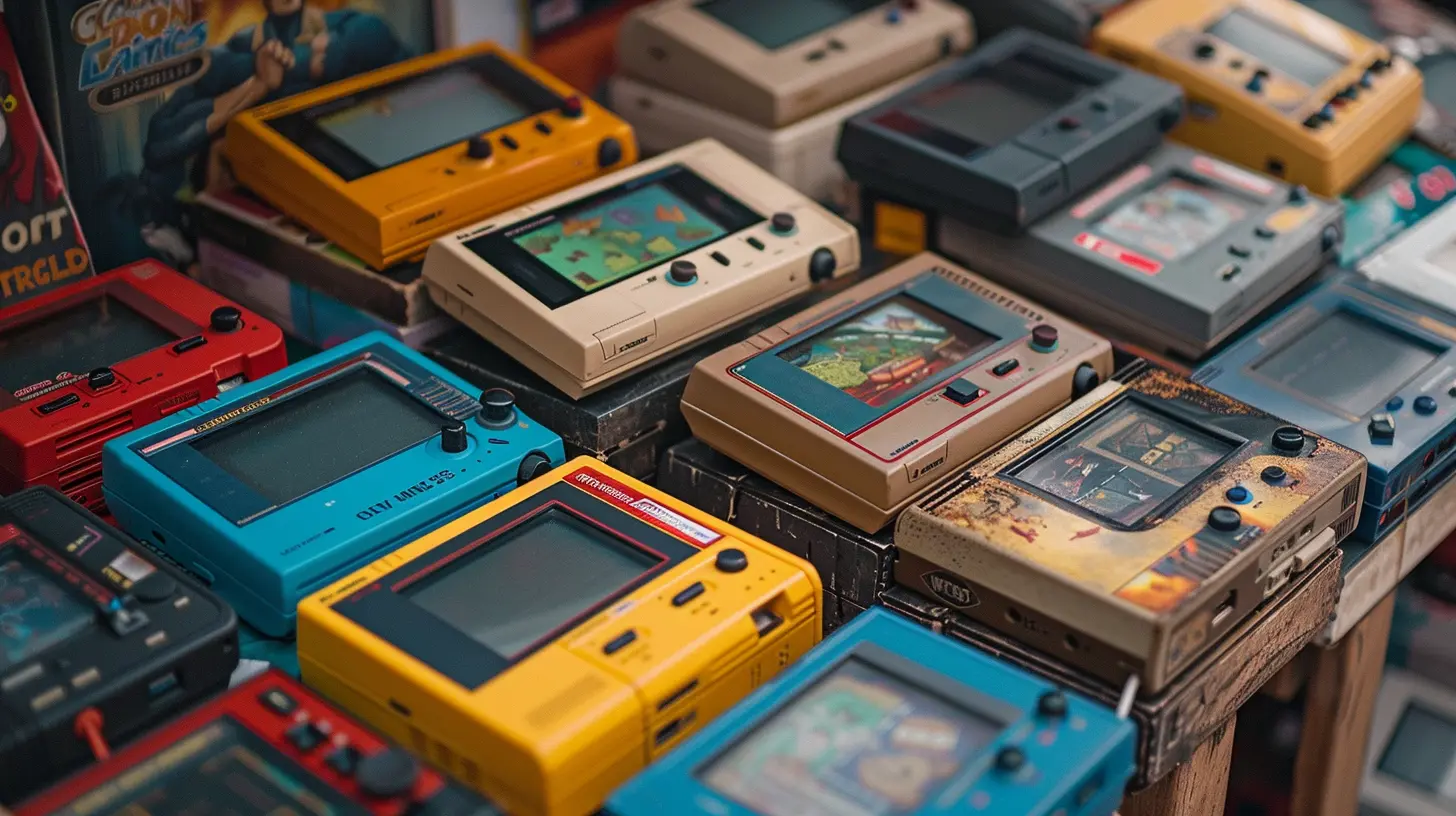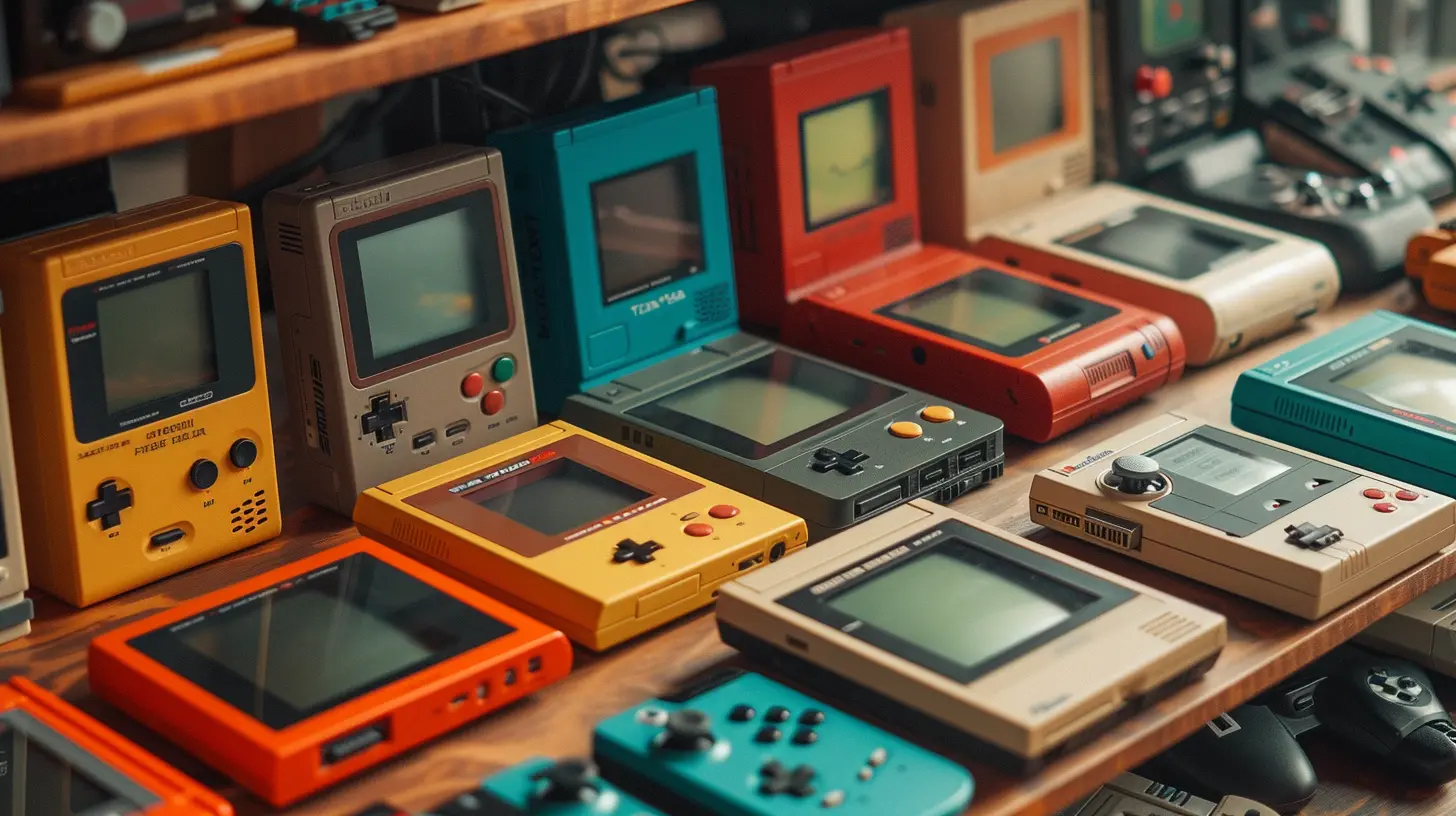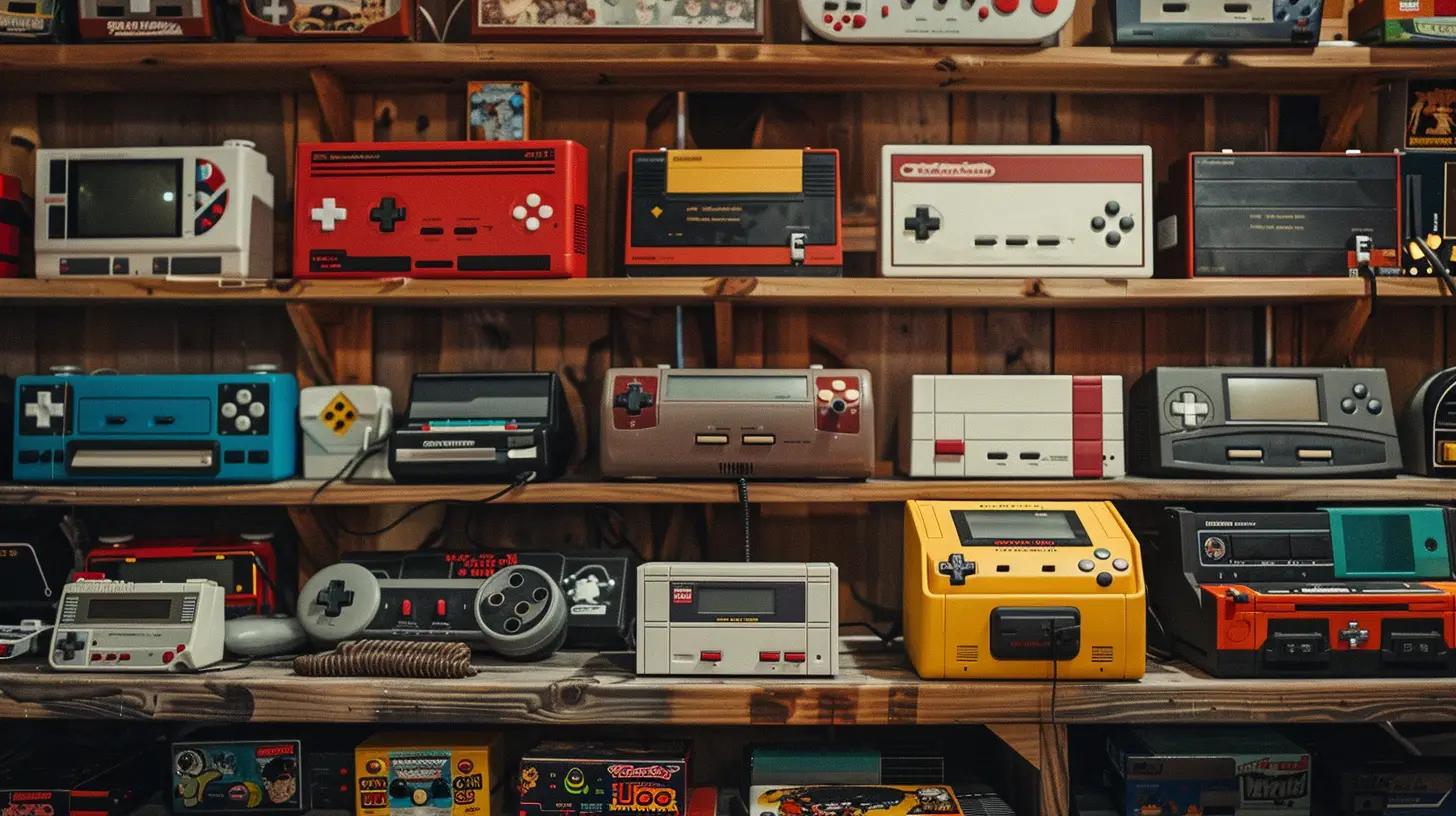The Best Retro Consoles You’ve Never Heard Of
17 July 2025
When it comes to retro gaming, most folks instantly think of the NES, Sega Genesis, or maybe even the PlayStation 1 if you’re feeling adventurous. But let’s be honest—those consoles are the celebrities of the retro gaming world. What about the underdogs? The forgotten legends? The obscure gems that got lost in the shuffle? They may not have sold millions or had globe-spanning marketing campaigns, but they were innovative, quirky, and in some cases—light-years ahead of their time.
In this post, we’re going beyond the mainstream. Let's dive into The Best Retro Consoles You’ve Never Heard Of—systems that deserve a second chance to shine, especially if you’re a diehard retro gamer or a curious collector.
Why Bother with Obscure Retro Consoles?
Before we dive into the list, you might be wondering—why even bother with these lesser-known systems?Well, think of these consoles as the indie bands of the gaming world. They didn’t make it big, but they often tried new things, had a passionate fanbase, and delivered experiences you won’t find anywhere else. Whether it was due to poor timing, bad marketing, or just plain bad luck, these consoles slipped through the cracks.
But here’s the kicker—they often had features or games that were way ahead of their time. And if you're tired of playing the same Mario titles or Sonic levels over and over, these unsung heroes offer a refreshing change.
1. FM Towns Marty (1993)
Ever heard of Fujitsu’s FM Towns Marty? No? Well, buckle up.The FM Towns Marty was released only in Japan and is widely considered the first 32-bit home console. That’s right—before the Sega Saturn, before the original PlayStation, there was Marty. It could play CDs, had a built-in disk drive, and even supported mouse and keyboard inputs.
What Made It Special?
- CD-ROM support when most consoles were still using cartridges.- Backward compatibility with other FM Towns computer games.
- High-quality audio that rivaled the arcade experience.
Unfortunately, it was pricey and released exclusively in Japan, which didn’t help its global appeal. But if you manage to snag one today, you’ve got a serious piece of gaming history.
2. Neo Geo CD (1994)
Sure, you’ve heard of the Neo Geo AES or MVS—but what about the Neo Geo CD?SNK’s Neo Geo CD was their attempt to make the arcade-perfect experience more affordable. The AES system was known for being insanely expensive, so SNK decided to repackage their titles on CD-ROMs to cut costs. It was a noble idea, though the execution struggled thanks to one big flaw—agonizingly slow load times.
Why You Should Care
- The same beautiful 2D sprites and animation from the AES.- Large library of classic fighting and arcade games.
- Much more affordable than the AES system today.
If you can overlook the loading screens (grab a book maybe?), the Neo Geo CD is a fantastic way to relive SNK classics without breaking the bank.
3. PC-FX (1994)
Ah, NEC. The same folks who brought us the TurboGrafx-16 (or PC Engine in Japan). With the PC-FX, NEC tried to keep up with the big boys of the mid-90s console war. The result? Something totally different.Imagine a game console that looks like a PC tower. Now imagine it prioritizing full-motion video and anime-style storytelling over arcade-style gameplay. That’s the PC-FX in a nutshell.
What It Did Differently
- Offered high-quality anime cutscenes.- Geared more towards visual novels and RPGs.
- Modular tower design for future upgrades (though few actually happened).
It never made it outside of Japan, but for fans of anime and visual storytelling, the PC-FX is a treasure trove waiting to be uncovered.
4. VTech CreatiVision (1981)
This one’s a real oddball. The VTech CreatiVision came out so early that it was more of a hybrid between a video game console and a home computer. Sold primarily in Europe, Australia, and a few Asian markets, it featured a built-in keyboard and supported programming and game development.Why It’s an Odd but Interesting Relic
- Dual function as a computer and gaming console.- Unique modular design.
- A cult classic among European retro collectors.
It couldn’t compete with the likes of Atari or Commodore but still holds a unique place in history.
5. Bandai Pippin (1996)
Yep, Bandai teamed up with none other than Apple to try their hand at the console market. The result? The Bandai Pippin.It was meant to be a multimedia machine rather than just a console. Big mistake. The world wasn’t ready for such a hybrid device in the mid-90s. Still, it was an ambitious leap that deserves some respect.
Points for Innovation
- Internet-ready before it was cool.- Used a Mac-compatible operating system.
- Created as a flexible platform for both games and education.
Let’s be honest, the games weren’t memorable, but the sheer audacity of the project makes the Pippin a fascinating footnote in gaming history.
6. Watara Supervision (1992)
If there was ever a “dollar store Game Boy,” this was it. The Watara Supervision was a handheld console aimed at undercutting Nintendo’s juggernaut by being cheaper (and, well, not better).So Why Mention It?
- It had a decent-sized library with some hidden gems.- The screen could pivot for a more “console-like” feel.
- Some versions had a TV-out option.
It didn’t exactly set the world on fire, but for those who love collecting handhelds, the Supervision is an amusing piece of history.
7. Casio Loopy (1995)
I bet you’ve never seen a console aimed specifically at girls—in the '90s, no less. That was the Casio Loopy’s niche.This Japan-only console came with a built-in color thermal printer (yep, stickers!) and focused on romance games, dress-up, and crafting. Weird? Maybe. But it was way ahead of its time in embracing a demographic largely ignored by other console makers.
What Made It Unique?
- Built-in printer for making stickers from screenshots.- Aimed specifically at female gamers.
- Exclusive lineup of cute and quirky titles.
It flopped commercially, but props to Casio for thinking outside the box.
8. Amstrad GX4000 (1990)
The Amstrad GX4000 was Britain's answer to the NES and Master System. It didn’t exactly succeed, but it did have some pretty decent ports and a few exclusive titles.The Good, The Bad, and The Stylish
- Sleek futuristic design (seriously, Google it).- Based on existing Amstrad CPC hardware, so developers didn’t need to start from scratch.
- But… it had a teeny-tiny game library.
Still, it’s a favorite among UK collectors who want a taste of “what could have been.”
9. Memorex VIS (1992)
VIS stood for Video Information System, which is a fancy way of saying “jack-of-all-trades, master of none.” This CD-based console tried to do gaming, multimedia, and educational software, but didn’t nail any of them.So Why Is It On This List?
Because it’s a total curiosity. Think of it as the console world’s equivalent of a Swiss Army Knife bought at a dollar store. Quirky? Yes. Good? Not really. But fascinating? Absolutely.10. Epoch Super Cassette Vision (1984)
If you thought Nintendo was Japan's only gaming innovator, think again. Epoch’s Super Cassette Vision was a well-received console in Japan, even if it didn’t reach Western shores in any meaningful way.It Had Its Moments
- A good lineup of arcade-style games.- Surprisingly competent sound and graphics for the time.
- Did relatively well in Japan until Famicom crushed everything in its path.
Today, it’s a collector’s item with a small but passionate fanbase.
Final Thoughts: Treasure Hunting for Retro Greatness
You don’t need to look far to find a NES or SNES mini—you can walk into almost any store and buy one. But there’s something magical about digging deeper, falling down the rabbit hole of obscure retro consoles, and discovering systems that dared to be different.Sure, they weren’t perfect. Many were deeply flawed. But like old vinyl records or vintage cars, their imperfections are part of the charm. They tell a larger story—a story of innovation, ambition, and sometimes, hubris.
So next time you’re scrolling through eBay or exploring a flea market, keep an eye out. Who knows? You might just stumble across one of these forgotten legends. And if you do, give it a whirl. You might fall in love with a chunk of gaming history you never knew existed.
all images in this post were generated using AI tools
Category:
Retro GamesAuthor:

Madeleine McCaffrey
Discussion
rate this article
2 comments
Runehart Ward
What a fantastic read! It’s amazing how many hidden gems are out there in the retro gaming world. Your insights bring back such nostalgia while also highlighting consoles that deserve more love. I can’t wait to explore these lesser-known treasures. Thanks for sharing this delightful trip down memory lane!
November 3, 2025 at 3:39 AM

Madeleine McCaffrey
Thank you for your kind words! I'm glad you enjoyed the article and I hope you discover some new favorites in the retro gaming world!
Elena McGillivray
Great article! I love discovering these hidden retro gems!
July 23, 2025 at 3:09 AM

Madeleine McCaffrey
Thank you! I'm glad you enjoyed it and discovered some new gems!


